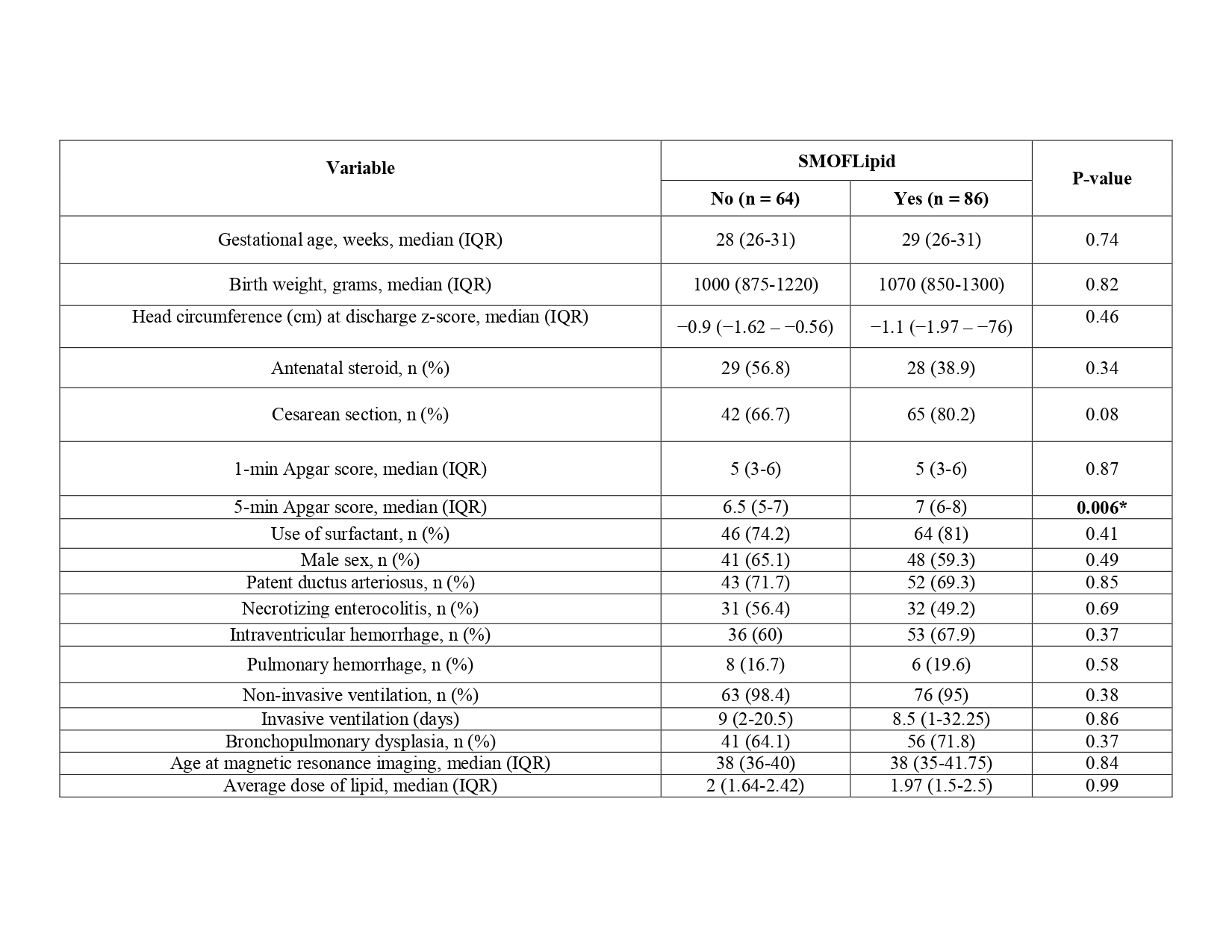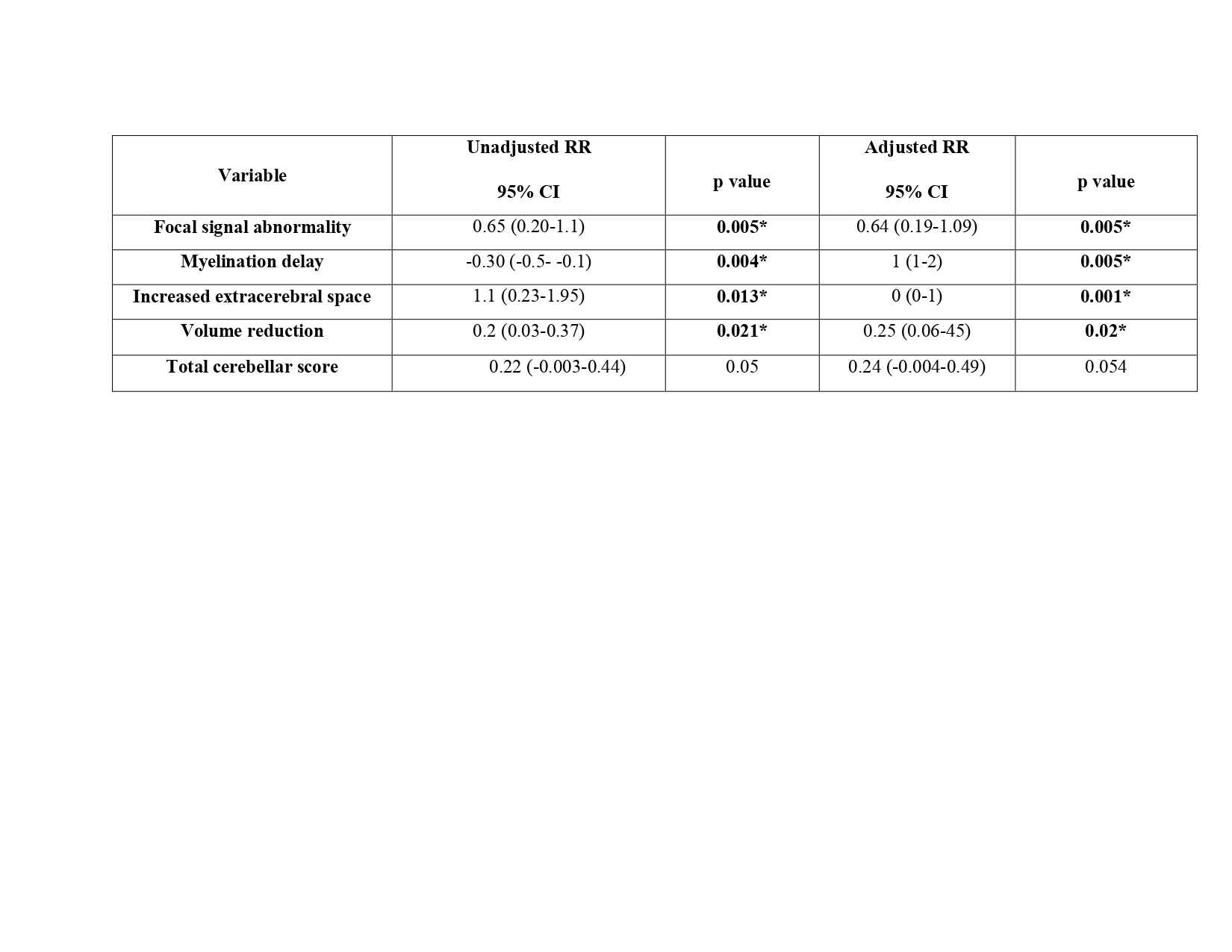Neonatal Fetal Nutrition & Metabolism
Neonatal Fetal Nutrition & Metabolism 1: Neonatal and Fetal Metabolism
310 - Association between SMOFlipid exposure and impaired brain development on term-equivalent age brain magnetic resonance imaging in very preterm infants
Publication Number: 310.128

Mountasser M. Al-Mouqdad, MD (he/him/his)
NICU consultant
King Saud Medical City
Riyadh, Ar Riyad, Saudi Arabia
Presenting Author(s)
Background: The soybean oil, medium-chain triglycerides, olive oil, and fish oil lipid (SMOFlipid) is increasingly being used worldwide without definite evidence of its benefits.
Objective:
This study aimed to investigate the relationship between type of lipid emulsion and its effect on brain injury on term-equivalent age magnetic resonance imaging in very preterm infants.
Design/Methods:
We included 150 infants with a birth weight of < 1500 g who were born at the King Saud Medical City at ≤ 32 gestational weeks. They were admitted to the neonatal intensive care unit and underwent term-equivalent age and pre-discharge brain magnetic resonance imaging. Very preterm infants who received soybean-based lipid emulsion between January 2015 and December 2018 were compared with those who received SMOFlipids between January 2019 and October 2022 in our neonatal tertiary center. A negative binomial with generalized linear models was applied for univariate relative risk analysis. Modified log-Poisson regression with generalized linear models and a robust variance estimator (Huber–White) were applied to adjust for potential confounding factors. The Kidokoro score was then used to determine if type of lipid emulsion will have any effect on brain morphology and growth at term-equivalent age.
Results:
Of them, 86 (57.3%) received SMOFlipid. SMOFlipid was significantly associated with lower focal signal abnormality, myelination delay, increased extracerebral space, and cerebellar volume reduction (P = 0.005, P = 0.005, P = 0.001, P = 0.02, respectively).
Conclusion(s):
SMOFlipid is associated with brain insult, especially in the white matter, cortical gray matter and cerebellum. More well-designed studies are required to investigate the effect of lipid emulsion on the central nervous system. 
.jpg)

